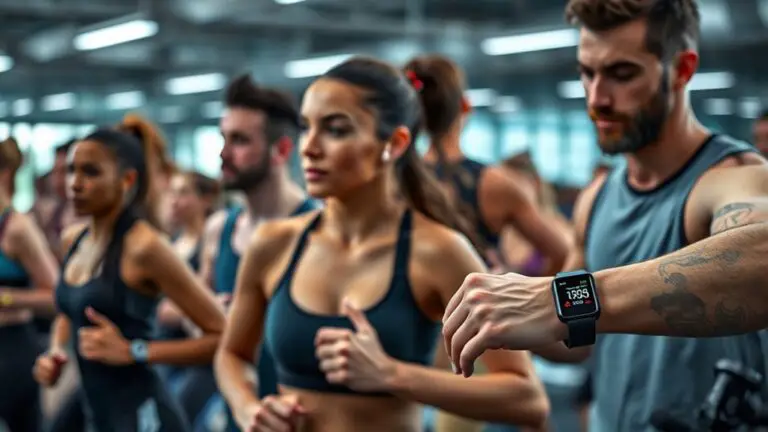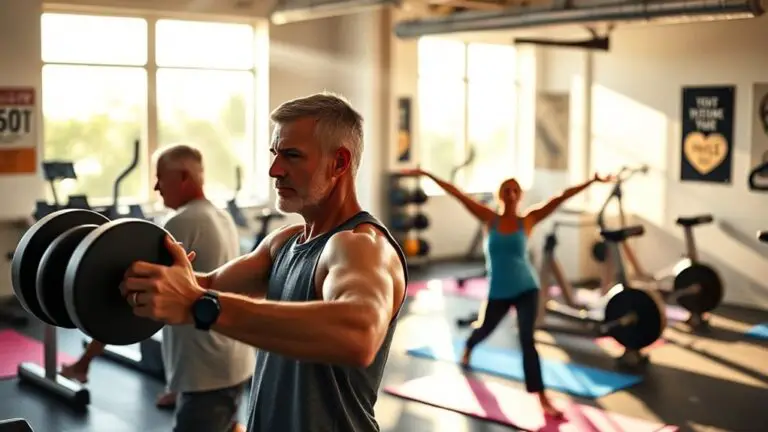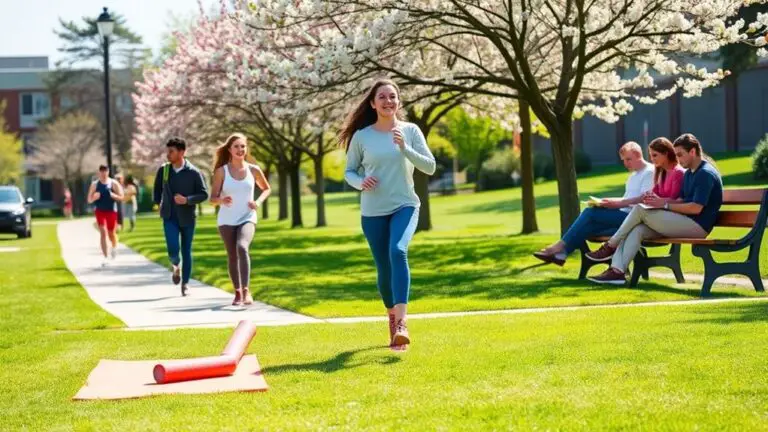How to Spot Fake “Before and After” Gym Transformation Photos

To spot fake “before and after” gym transformation photos, pay attention to lighting, angles, and editing signs. If the lighting changes drastically or the angles differ, it could signal manipulation. Look for consistent backgrounds and outfits for fair comparison. Genuine transformations show balanced muscle gain, not just weight loss. Also, if there’s no mention of diet or lifestyle changes, be cautious. Curious about more ways to uncover the truth? There’s plenty more to discover!
Analyzing Lighting and Angles
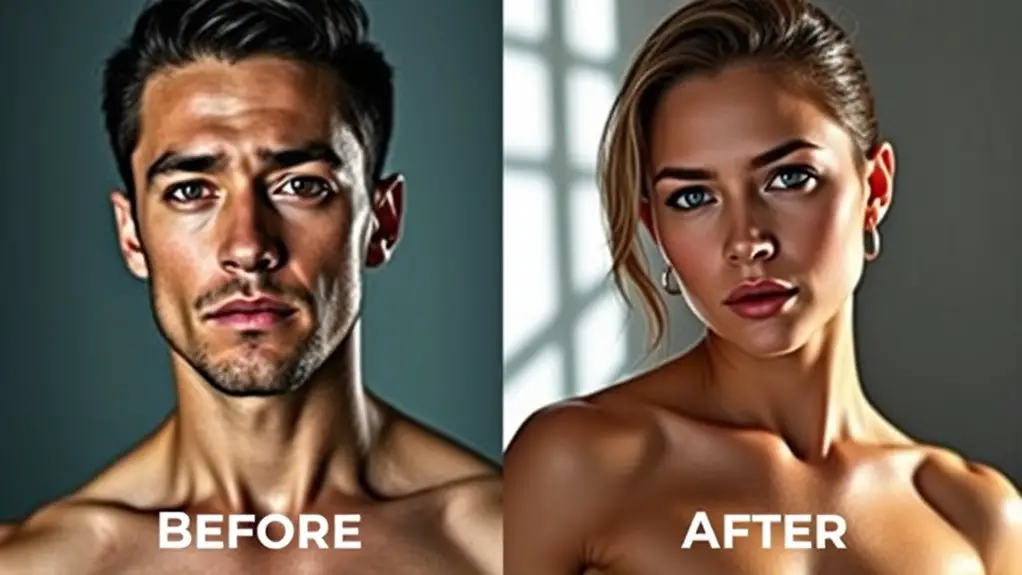
When you’re trying to spot fake gym transformation photos, one of the first things to contemplate is how lighting and angles can dramatically alter the perception of a person’s physique. Lighting effects can highlight muscle definition or obscure flaws, creating an illusion of a more sculpted body. For instance, high-contrast lighting can emphasize shadows, making muscles appear more pronounced than they really are.
Similarly, angle distortions play an essential role in how we perceive a transformation. A photo taken from below can make someone look taller and more muscular, while a shot from above can flatten the figure. It’s important to analyze whether images are consistent in their lighting and angles across both “before” and “after” shots. If the lighting or angle shifts considerably, it’s a red flag. Always be skeptical of photos that seem too good to be true; they often are manipulated to deceive.
Examining Body Composition Changes
Understanding the nuances of body composition changes is key to spotting fake gym transformation photos. Real transformations involve shifts in both body fat and muscle gain, which can be subtle and gradual. Here’s what to look for:
- Proportional Changes: A genuine transformation will show balanced changes in muscle gain and fat loss, rather than extreme shifts in one area.
- Visible Definition: Look for defined muscles, indicating actual muscle gain, rather than just a weight loss illusion.
- Measurement Context: Photos should ideally include context, such as before-and-after body measurements or body fat percentages, to support claims.
- Consistency Over Time: Authentic transformations usually show a series of photos over time, demonstrating a steady, realistic progression. Additionally, genuine transformations often incorporate effective cardio workouts, such as skipping rope, which contribute to both fat loss and muscle gain.
Recognizing Photoshop and Editing Techniques

Many fitness enthusiasts may not realize just how easily images can be manipulated, making it essential to recognize Photoshop and editing techniques in gym transformation photos. If you look closely, you might spot subtle signs of editing that can skew the reality of someone’s progress. Commonly used Photoshop tools, like the liquify filter, can drastically alter body shapes, creating unrealistic physiques.
Editing software often allows users to enhance color saturation or adjust lighting, making the “after” photo appear more striking than it really is. You should also be wary of shadows and backgrounds that look inconsistent; they can indicate manipulation. Additionally, watch for overly smooth skin or unnatural muscle definition, as these can be signs of heavy retouching. By being vigilant and aware of these techniques, you can better assess the authenticity of transformation photos and avoid falling for misleading representations.
Checking for Consistency in Progress Pictures
Consistency in progress pictures is essential for evaluating fitness transformations accurately. When you look at transformation photos, you should check for uniformity in the details. This helps guarantee photo authenticity and reveals the true nature of the progress timelines. Here are some key aspects to take into account:
- Lighting: Consistent lighting helps maintain a similar appearance across photos.
- Angles: The same camera angle can provide a fair comparison of body changes.
- Clothing: Wearing the same outfit or similar styles helps you spot differences more clearly.
- Background: A consistent background can indicate that the photos were taken in the same environment.
If you notice significant variations in these elements, you might be looking at manipulated images rather than genuine progress. By keeping an eye on these factors, you can better assess the authenticity of transformation claims.
Understanding the Role of Diet and Lifestyle Changes
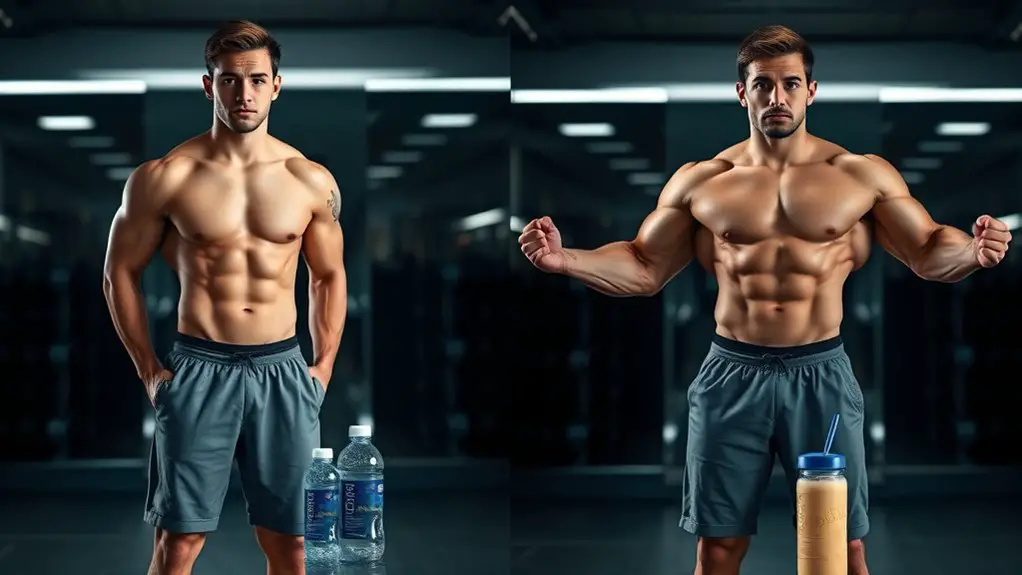
While spotting fake gym transformation photos can be tricky, recognizing the importance of diet and lifestyle changes is essential for anyone serious about their fitness journey. Your dietary habits play a vital role in achieving sustainable results. If you’re only focusing on workouts without a balanced diet, you might find it hard to reach your goals.
Moreover, lifestyle choices—like sleep patterns, stress management, and daily activity levels—significantly impact your body’s ability to transform. A person who consistently makes healthy choices is more likely to showcase genuine progress than someone relying solely on exercise.
When evaluating transformation photos, consider whether the person’s dietary habits and lifestyle changes align with the results they claim. If their story lacks these elements, it could be a red flag. Remember, real transformations take time, effort, and a holistic approach to health, not just a few gym sessions.
Frequently Asked Questions
How Can I Tell if a Photo Is Outdated?
To tell if a photo’s outdated, you should look for photo timestamps or metadata. If the date seems old or inconsistent with the content, that’s a red flag. Additionally, consider the image quality; older photos often have lower resolution or different editing styles. If the clarity is poor compared to modern standards, it might not be current. Always analyze these details to get a clearer picture of the photo’s timeline.
Are There Specific Signs of Excessive Muscle Gain in Photos?
Did you know that nearly 80% of gym-goers struggle with achieving balanced muscle symmetry? When evaluating photos, look for signs of excessive muscle gain, like disproportionate body proportions. If someone’s arms are markedly larger than their legs, or if the shoulders appear unnaturally broad compared to the waist, it’s a red flag. Real transformations usually showcase balanced growth across the body, highlighting both strength and aesthetic appeal, rather than extreme imbalances.
Can Clothing Choices Affect the Perception of Transformation?
Absolutely, clothing choices can greatly affect how a transformation is perceived. For instance, darker color choices can create a slimming effect, while lighter colors might highlight changes more dramatically. Additionally, body angles play an essential role; a well-chosen angle can enhance muscle definition or create the illusion of a more sculpted physique. So, when evaluating transformations, consider how these factors might influence your perception of the results. They’re key elements that can mislead the viewer.
What Role Do Filters Play in Altering Appearance?
Imagine a painter, who, with a flick of the brush, can create illusions. Filters act like that brush, altering reality in photo editing. They can smooth out imperfections, enhance colors, and reshape features, making you look different than you really are. You might not notice the filter effects at first, but they can greatly skew perception. So, next time you see a transformation photo, remember: it might be more art than reality.
How Can Social Media Influence My Perception of Fitness Transformations?
Social media can dramatically influence your perception of fitness transformations, often shaping unrealistic expectations. Within fitness culture, perfectly curated images can create a misleading narrative about body ideals and progress. You might find yourself comparing your journey to those polished posts, leading to feelings of inadequacy. It’s essential to remind yourself that many of these images are filtered or staged, and real transformations take time, effort, and consistency—qualities that aren’t always visible online.
